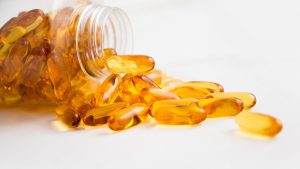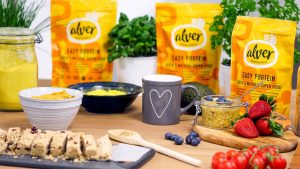The Difference Between Essential vs Non Essential Acids
You've seen the labels a thousand times, essential and non-essential acids, but do you know the meaning behind them?

Possibly two of the most common phrases you’ll see when discussing dietary supplements are Essential and Non-Essential Acids.
You’ll probably have heard of both essential fatty acids, non-essential fatty acids and the same for amino acids, right?
Let’s clear up what that means exactly.
Contents [Show]
What’s the difference between Essential and Non-Essential acids?
Put simply, essential acids have to come from your diet because your body cannot make them itself. Non-essential acids however, can be synthesized by your body so you don’t need to get them from your diet.
It’s definitely un-intuitive, and perhaps a little misleading to label acids non-essential when they are absolutely required to play essential parts in the production of proteins.
Some essential acids can even be synthesized by your body, but in quantities too small to be considered adequate.
So.. both essential and non-essential are required?
Absolutely. You’ll get both from food that you eat, but it’s crucial that your diet provides all the essential acids you require since your body can’t produce them.
Linoleic acid is an example of an essential fatty acid. It’s used in the production of cell membranes and cannot be synthesized by your body alone. Common sources of linoleic acid are meats and dairy products. It’s found abundantly in plants, and as such we get it from the produce of ruminant mammals. Many also choose to take conjugated linoleic acid supplements for their apparent effects on the metabolism.
Non-essential acids found in foods are still useful, but any gaps left by your diet will be compensated for by your body.
Are there conditions under which Non-Essential acids become Essential?
You bet. In some circumstances, usually due to illness or stress, non-essential acids can become essential acids because your body can’t synthesize them.
These are called conditionally essential amino acids, and they make up 8 out of the total 11 non-essential acids.
Glutamine is one example of a conditionally essential amino acid. As with all of the 20 proteinogenic amino acids, it’s vital in the production of proteins in the body (clue’s in the name!).
Because of this, glutamine supplements are commonplace among bodybuilders, who stock up while losing weight to ensure their bodies have an adequate supply.
Since it’s conditionally essential and your body can cope just fine without supplementation in normal circumstances, research has proven that the effects of supplementation are limited among healthy adults [1].
What do I need to do to get enough of both?

Providing you get your recommended daily intake of carbohydrates and proteins then there’s no need to worry. You’ll be getting enough of both essential and non-essential acids for your body to be able to produce what isn’t accounted for without issue.
It’s a common misconception that the consumption of plant based foods only will lead to a deficiency in either. There’s no reason for this to be true.
In a varied diet, the amino and fatty acids provided by different foods complement each other by making up for the gaps each has. This is known as the complementary action of proteins, and their specific pairings have been researched [2] in quite some depth to expand our understanding of nutrition and subsequent supplementation.
Resources
- https://www.ncbi.nlm.nih.gov/pubmed/11822473
- https://journals.plos.org/plosone/article?id=10.1371/journal.pone.0018836
Stay on top with our newsletter.


